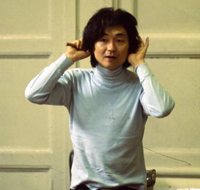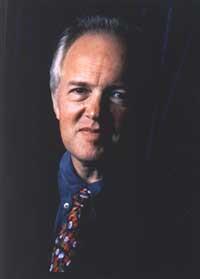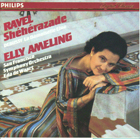
Back in the Ring: Ozawa and De Waart at the SF Symphony
This is the fifth of a series of articles devoted to the San Francisco Symphony's long discography. The story so far:
- Pierre Monteux's many RCA Victor recordings in the 1940s and early 1950s then leaping ahead to:
- The backstory to Herbert Blomstedt's Decca recordings from the 1980s and early 1990s followed by:
- The Blomstedt recordings after which we reverse time back to:
- The "transition" years of Enrique Jordá and Josef Krips (1950s and 60s), when the river of recordings evaporated.
Josef Krips departed from the SFS in the late 1960s, a particularly interesting time for an orchestra to be shopping for a new leader. Change was in the air.
For several decades, conductor-orchestra symbioses had been among the most recognizable and marketable items in the classical record catalogs. One tended to think of them as single words: Clevelandszell, Chicagoreiner, Bostonmunch, Philadelphiaormandy, Newyorkbernstein, and Berlinkarajan.
It seemed as though the golden stream of wonderful records would never end — Szell, Ormandy, and Bernstein on Columbia; Reiner, Munch (and sometimes Ormandy too) on RCA; Karajan on DG, Decca, and EMI. These were good times indeed.
But nothing is forever. Munch and Reiner died in the 1960s, Szell in 1970. Bernstein left the New York Phil in 1969. Ormandy soldiered on for another decade in Philadelphia, while Karajan kept up the pace until his death in 1989, but few equivalent partnerships have emerged in the intervening years.
Divorced or widowed orchestras of the 1970s, eager to form the next hot-tamale combo, were apt to run passionately after any rising conductor who emanated the slightest whiff of potential star-power. One fellow in particular raised high hopes: the thrilling young Seiji Ozawa, a podium crown prince if ever there were one. Student of Munch and Monteux, protegé of Bernstein and Karajan, snappy dresser, adorable and effervescent, he promised a radical departure from the bitchy old European guys still dominating American orchestras, post-Lenny or not.
 Just-call-me-Seiji got the job and from 1969 to 1976 all San Francisco was his baby, as delighted audiences flocked to the Opera House and recording contracts rained down after the long drought. The SFS put out some dandy stuff on Philips and Deutsche Grammophon, in particular an amazing American combo recording featuring a firecracker rendition of Gershwin's An American in Paris, the symphonic dances from Bernstein's West Side Story, and most fun of all, William Russo's Street Music featuring jazzman Corky Siegel on piano and harmonica.
Just-call-me-Seiji got the job and from 1969 to 1976 all San Francisco was his baby, as delighted audiences flocked to the Opera House and recording contracts rained down after the long drought. The SFS put out some dandy stuff on Philips and Deutsche Grammophon, in particular an amazing American combo recording featuring a firecracker rendition of Gershwin's An American in Paris, the symphonic dances from Bernstein's West Side Story, and most fun of all, William Russo's Street Music featuring jazzman Corky Siegel on piano and harmonica.
A very, very good Tchaikovsky Romeo & Juliet was released as part of an overall exploration of Romeos from Berlioz, Prokofiev, and Tchaikovsky.
The 1975 Philips recording of Dvorak's "New World" Symphony, No. 9 in E minor aptly illustrates the Ozawa/SFS, halos and warts alike. After three serviceable but bland-ish movements, Ozawa cooks up a red-hot, sizzling finale. The orchestra does itself up proud throughout, save some occasional brass intonation which, although never truly out of whack, causes some slight discomfort — at least for bat-eared guys like me.
(Speaking of my chiropteral self, I migrated to San Francisco as an SF Conservatory student during Ozawa's tenure, and instantly became a devoted fan of the orchestra and its spunky celeb maestro. I could be found scrunched up near the ceiling of the Opera House whenever I could score a student ticket, or if my wafer-thin wallet could shed a few shekels. After all those acrophobia-inducing hours, to this day my mind's eye cannot envision Seiji Ozawa as being any larger than a honeybee.)
The Golden Boy was not destined to stick around. Before long, the august Boston Symphony came calling, and in 1973 Ozawa accepted the directorship. For a while he made a game attempt at podium polygamy, but by 1976 the gig was up. Ozawa went on to serve one of the longest tenures in Boston's history, remaining in charge until 2002. He helmed the Vienna State Opera until 2007.
 Edo de Waart succeeded Ozawa in 1977. The young Dutchman was a fine, undemonstrative conductor who shepherded the orchestra through its move from the Opera House to Davies Symphony Hall, after which the SFS could finally program a full-year season and I could start sitting a little closer to sea level. The San Francisco Opera orchestra split off as a separate entity from the SFS, allowing De Waart the opportunity to hire a significant number of immensely capable new players.
Edo de Waart succeeded Ozawa in 1977. The young Dutchman was a fine, undemonstrative conductor who shepherded the orchestra through its move from the Opera House to Davies Symphony Hall, after which the SFS could finally program a full-year season and I could start sitting a little closer to sea level. The San Francisco Opera orchestra split off as a separate entity from the SFS, allowing De Waart the opportunity to hire a significant number of immensely capable new players.
During De Waart's tenure, the Symphony established a composer-in-residence program, the first recipient of which was local composer John Adams. John was then on the faculty of the San Francisco Conservatory (with your humble correspondent amongst his graduate students) and had become identified with a group of refreshingly unintimidating composers known as minimalists.
John's residency led to some of De Waart's most memorable SFS recordings, including the groundbreaking Harmonium (1984), followed by Harmonielehre (1985), Shaker Loops (1984), then a 1986 CD encompassing The Chairman Dances, Christian Zeal and Activity, Two Fanfares for Orchestra (the second of which is the popular Short Ride in a Fast Machine), and Common Tones in Simple Time.
John also recorded with the SFS himself — but I'll leave that for a future post.
The orchestra added another minimalist feather to its cap with Steve Reich's Variations for Winds, Strings, and Keyboards, recorded in 1984.
De Waart's discography is not by any means limited to minimal- and modern-ists. A knockout 1985 Philips recording of the Saint-Saëns "Organ" Symphony No. 3 with Jean Guillou soaring on the new Davies Hall Ruffatti stands high in the catalog. The grand Ruffatti also starred in Michael Murray's Telarc disc of Joseph Jongen's Symphonie Concertante, recorded in 1984.
 One of De Waart/SFS's finest CDs, an early all-digital production — now sadly an out-of-print collector's item — is a 1982 Philips recording with soprano Elly Ameling offering beguiling renditions of Ravel's Schéhérazade, Debussy's La Damoiselle elue, and two DuParc chansons. This pretty little puppy is a prime candidate for re-release, even at the risk of ruining its value as a collectible. In the interest of being a properly supportive Symphony patron, I bought a copy as part of my very first batch of CDs, in 1983 — and heaven-knows-how-many-thousands of CDs later I still find it as lovely as ever. And no, you may not borrow it.
One of De Waart/SFS's finest CDs, an early all-digital production — now sadly an out-of-print collector's item — is a 1982 Philips recording with soprano Elly Ameling offering beguiling renditions of Ravel's Schéhérazade, Debussy's La Damoiselle elue, and two DuParc chansons. This pretty little puppy is a prime candidate for re-release, even at the risk of ruining its value as a collectible. In the interest of being a properly supportive Symphony patron, I bought a copy as part of my very first batch of CDs, in 1983 — and heaven-knows-how-many-thousands of CDs later I still find it as lovely as ever. And no, you may not borrow it.
The De Waart/SFS CD of Respighi's Pines of Rome, Fountains of Rome, and The Birds is also out of print, but hasn't achieved collector status — used copies can be found easily.
De Waart also recorded Rachmaninoff's complete works for piano and orchestra with Zoltan Kocsis, still in print and definitely worth hearing.
Herbert Blomstedt took over the podium beginning in 1985, inaugurating a splendid new era for SFS recordings.
Coming up: the odds 'n' ends article (Adams, Wuorinen, Neale, Outwater, and Alfred Hertz), then onwards to MTT and today's glittering discography. I am planning a valedictory article as well, singling out some SFS records of which I am particularly fond.
A few links you might find useful:
